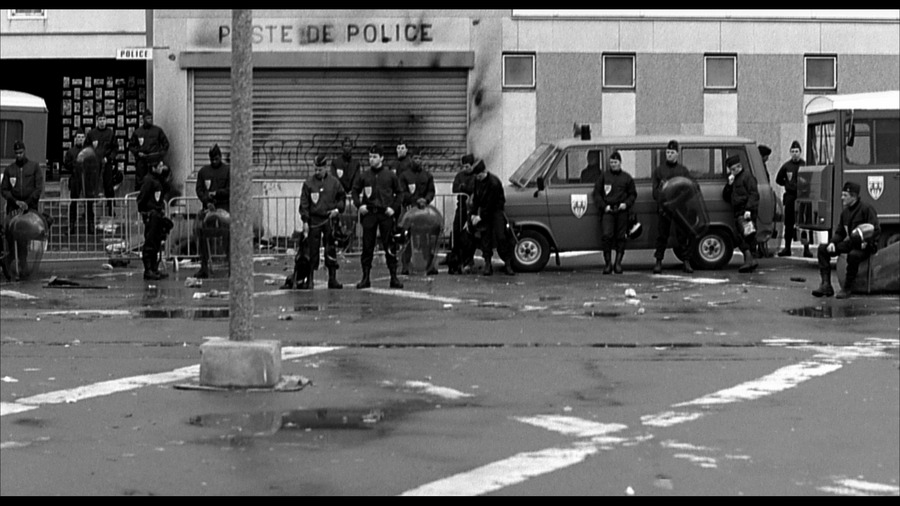
Kassovitz used the 1986 death of student protestor Malik Oussekine as the template for this storyline. It is the night after an uprising that started when a young Arab man was put into a coma by the police. It’s only after this unapologetically biased beginning that we’re introduced to the three protagonists whose perspective on the world is about to seduce us. The song contains a lyric arguing that policemen wear “uniforms of brutality”. If the camera angles framing the action from the perspective of those battling the police aren’t enough to convince the viewer that the officers of the law are not the heroes here, Bob Marley’s classic resistance song Burnin’ and Lootin’ booms from the soundtrack. Then it shows a montage of rioters clashing with the police. (“Heard about the guy who fell from a skyscraper? On his way past each floor he says to himself, ‘so far, so good’, but what's important isn’t the fall, it's how you land.”) In a dazzling visual effect, the Earth goes up in flames. Nothing unusual there, until a Molotov cocktail flies towards our planet and an as yet unidentified voiceover provides an anecdote. In one of the most famous opening sequences of cinema, La Haine begins with a shot of the Earth seen from space. La Haine had a huge impact on French society – leading newspapers to discuss poverty in the outer cities and provoking politicians from President Jacques Chirac to National Front leader Jean-Marie Le Pen to reference it – but it also changed cinema. No longer are the great screen rebels macho white males – but instead they are women, immigrants, or homosexuals, all fighting the white male supremacy with which the old rebels were complicit. Indeed, the success and influence of the film has been so great that since La Haine, the on-screen rebel has been redefined. Whereas La Haine reminded audiences that rebellion could be about something much more profound – overthrowing systemic injustice and the status quo. That is because for a long time cinema hoodwinked audiences into believing rebellion was about asserting one’s independence with a stylish look and lots of attitude. What I mean by ‘true’ rebels are not those that might most immediately come to mind when you cast your mind back through cinema history. It seemed obvious to me that the season should be about rebellion and screen rebels – but only true ones. With the caveat that my selections had to be available for digital projection because of coronavirus rules, I was given carte blanche to program the season how I wanted.

It was a couple of weeks after the murder of George Floyd in May that I was contacted by the British Film Institute asking if I wanted to programme a season of films around the film, to mark its 25th anniversary. I would argue that if you want to understand Black Lives Matter, watch La Haine. It exposes the gap between rich and poor highlights the racism that consigned those from marginalised backgrounds to live in concrete blocks in suburbs – or banlieues – on the outskirts of the French capital and, most resonantly right now, depicts the police as instruments of brutality set up to protect the rich white elites.

Covering 24 hours in the life of three men from immigrant families – one black, one Arab, and one Jewish – it stands as an indictment of the worst aspects of French, and more broadly Western, democratic society.

However, as is so often the case with the greatest films, La Haine only seems to get even better with each passing year. – Five stars for Charlie Kaufman’s latest A searing study of working-class Parisian youth living in the city’s housing projects, it earned rave reviews, with Variety calling it “an extremely intelligent take on an idiotic reality” and the then 27-year-old Mathieu Kassovitz winning Best Director for what was only his second film. When La Haine premiered at the Cannes Film Festival in 1995, it made an immediate impact.


 0 kommentar(er)
0 kommentar(er)
